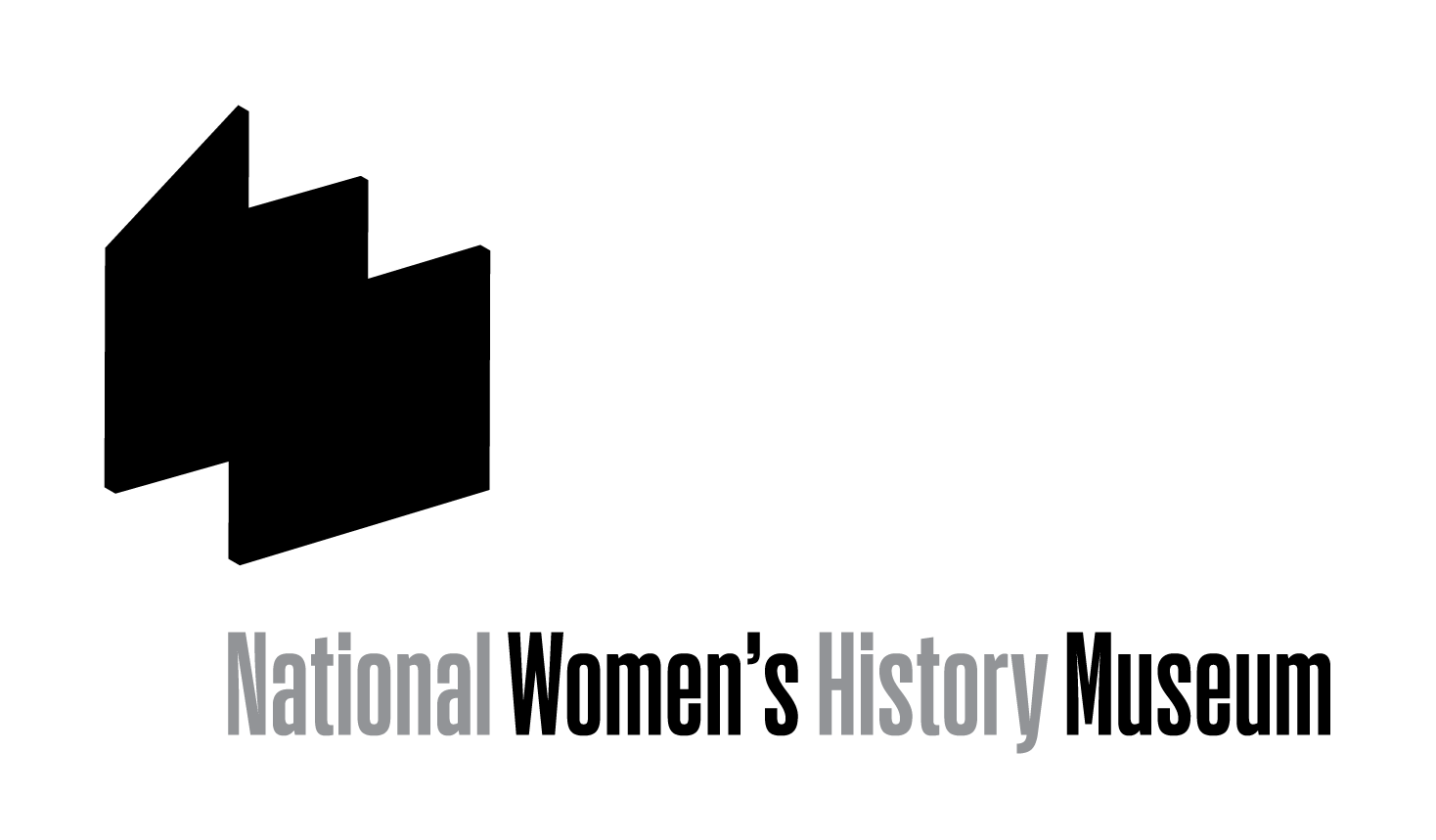
Symbolic Suffrage Colors
Throughout the American Suffrage Movement two major color themes were used. Gold, like on this sash, was first used by Elizabeth Cady Stanton and Susan B. Anthony while campaigning for suffrage in Kansas. The women adopted the Kansas state symbol, the sunflower, to represent their cause. Gold pins, ribbons, sashes, and yellow roses were worn to show support for suffrage. The other color theme, more common with the British Suffrage Movement, was purple, white, and green. Oftentimes in the United States the green was replaced with gold. Supporters also worn buttons, ribbons, and sashes in these colors to show their support.
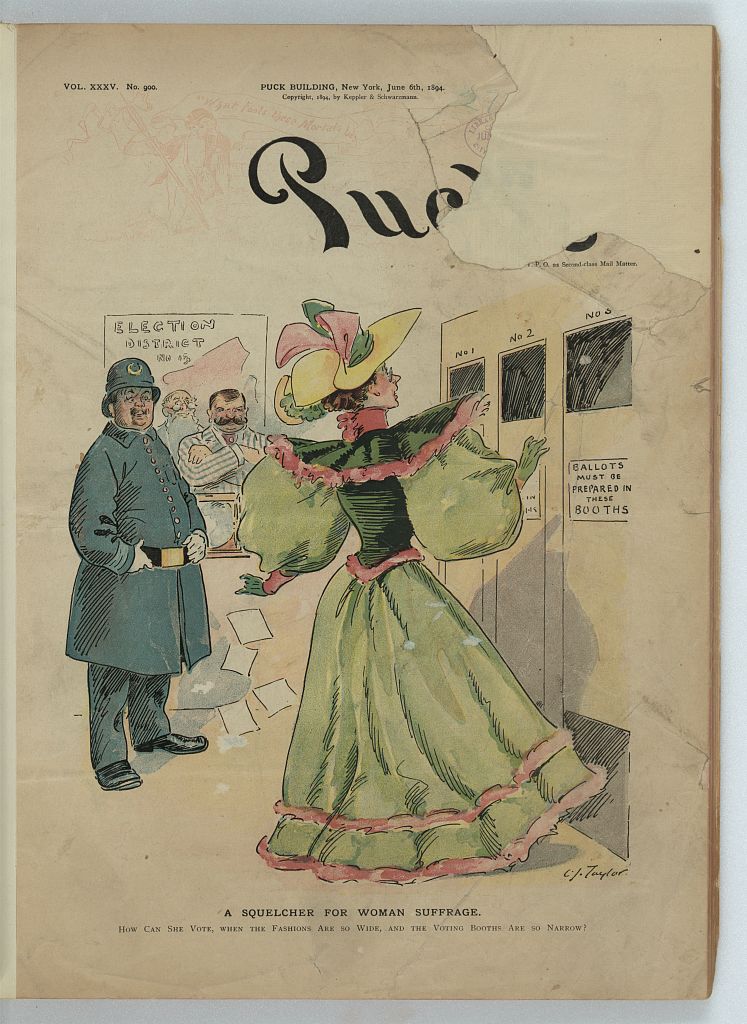
A Squelcher for Woman Suffrage
A political cartoon from Puck that shows a woman unable to fit into the polling booth.
Library of Congress
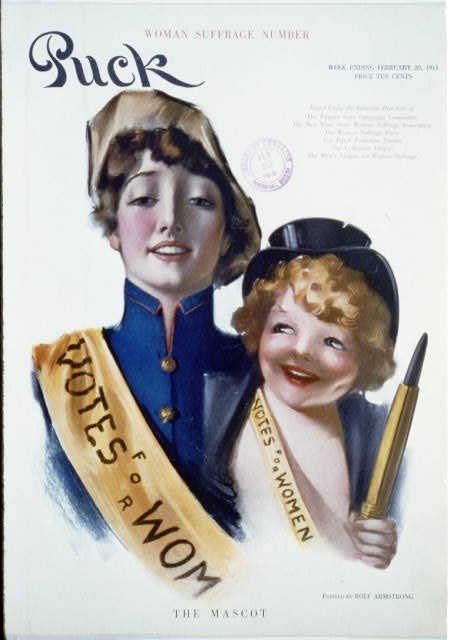
The Mascot
This political cartoon, published in Puck, shows the mascot of suffrage.
Library of Congress

Kewpies for Suffrage
BY “ROSE O’NEILL, 1915.
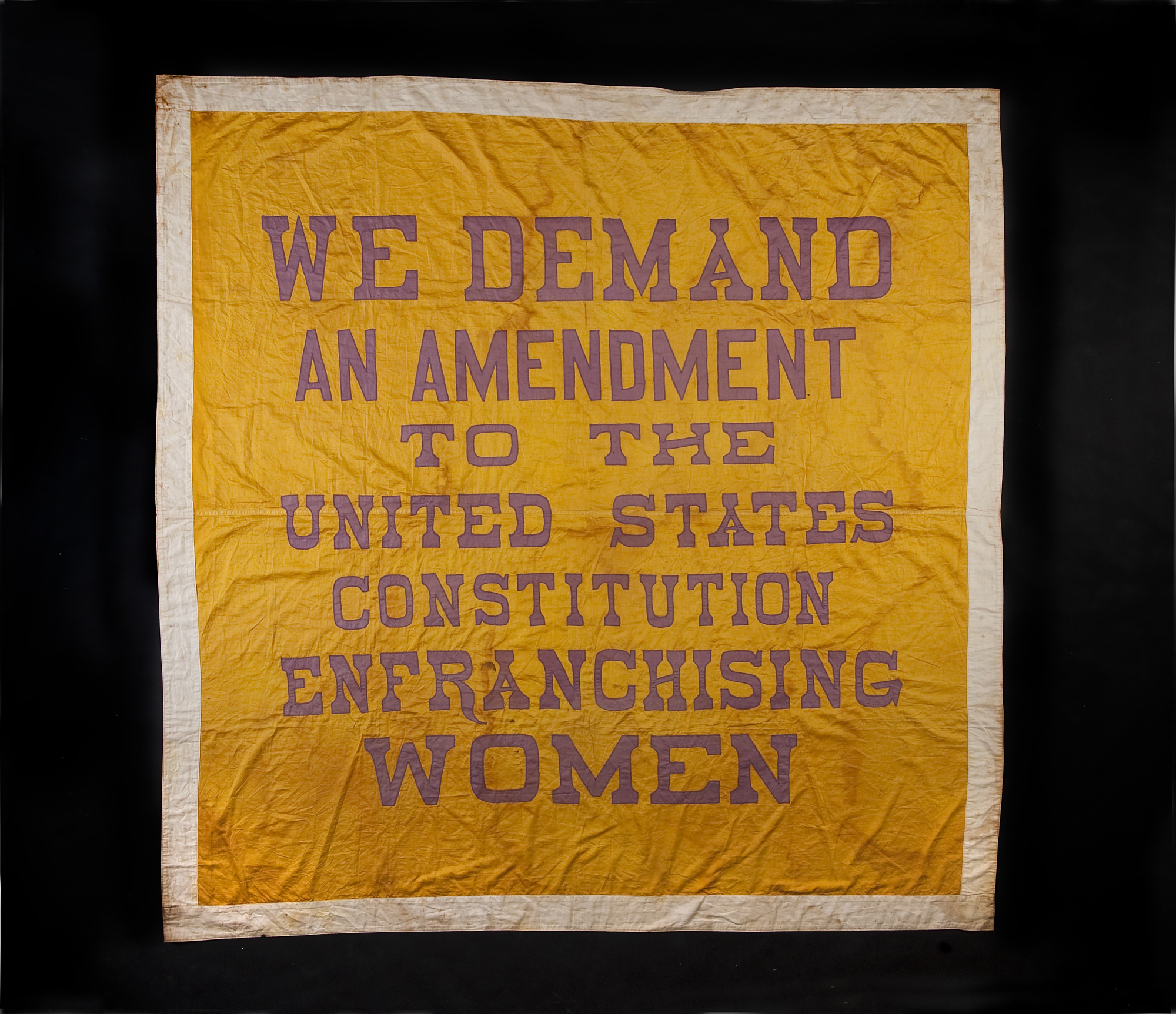
Woman Suffrage Banner, 1914-1917
Suffragists from the National Woman’s Party made smaller versions of the banner used on the 1913 parade’s first float. These "Great Demand" banners were used in demonstrations and rallies and at suffrage headquarters. Marie Gilmer Louthan carried this one in suffrage parades.
National Museum of American History, Kenneth E. Behring Center
![[Hedwig Reicher as Columbia] in Suffrage Parade](https://images.squarespace-cdn.com/content/v1/5602e55fe4b053956b5cbfb1/1484860545158-YD0KP5XXTZ10RD94VMA3/%5BHedwig+Reicher+as+Columbia%5D+in+Suffrage+Parade_LOC_11361v.jpg)
[Hedwig Reicher as Columbia] in Suffrage Parade
Photo taken in front of the Treasury Building at the Woman Suffrage parade held in Washington, D.C., March 3, 1913.
Library of Congress
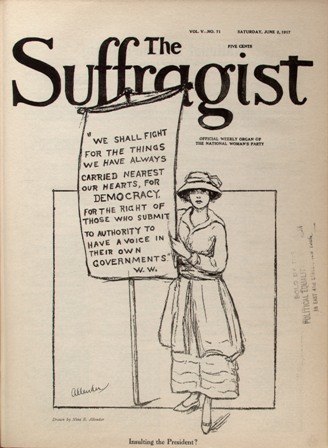
"Insulting the President?" by Nina Allender, June 2, 1917
A suffragist holds a banner quoting one of President Wilson's speeches: "We Shall Fight for the Things We Have Always Carried Nearest Our Hearts, For Democracy. For The Right of Those Who Submit To Authority To Have A Voice In Their Own Governments."
Artist Nina Allender was the official cartoonist for the National Woman's Party.
National Women's Party
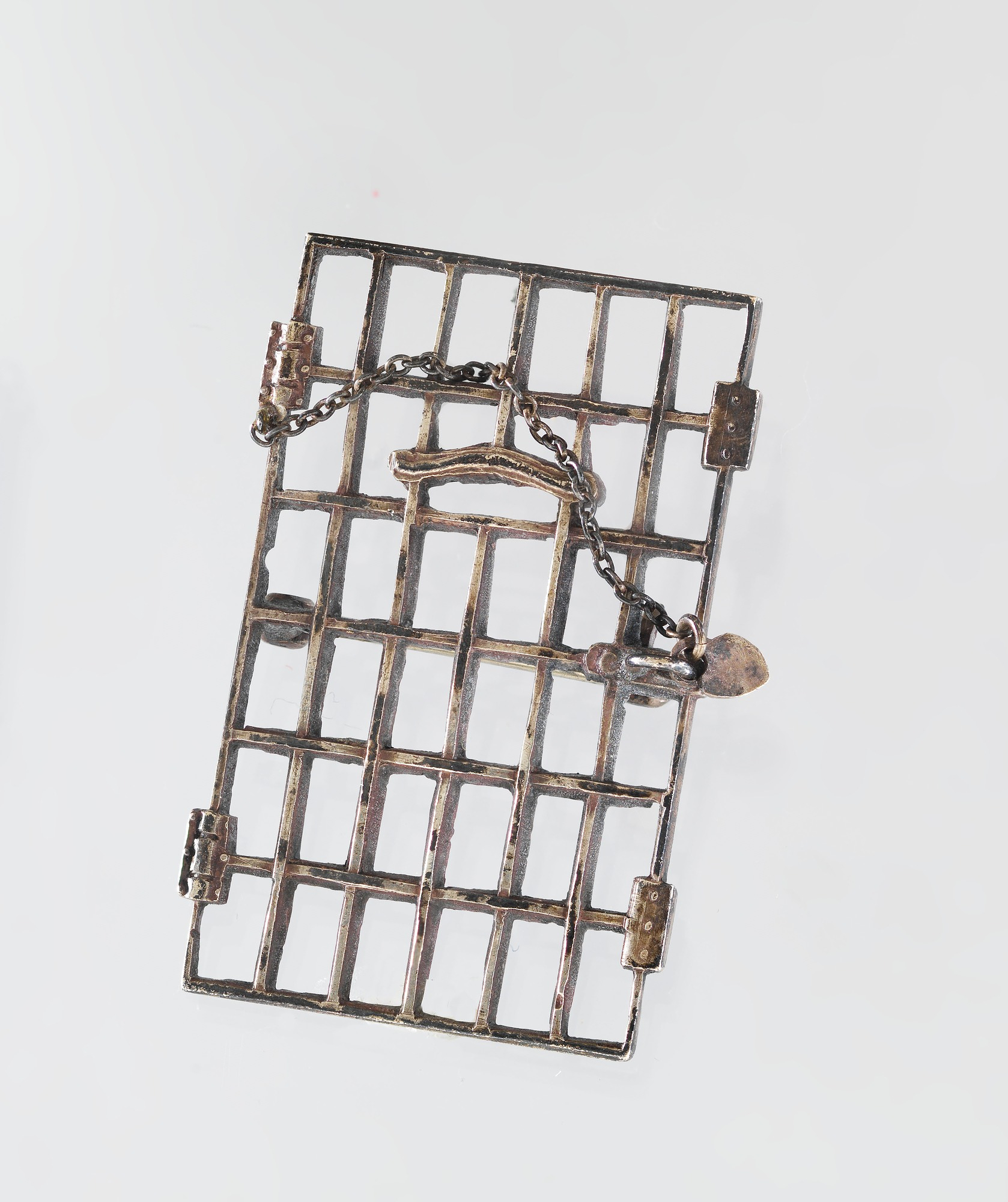
Jailed for Freedom Pin
Luciille Angiel Calmes received this Jailed for Freedom pin, a small silver prison door with a heart-shaped lock, after she was arrested and sentenced to five days in a District of Columbia jail for participating in a watch fire demonstration on January 13, 1919.
The watch fires of freedom marked a return of woman suffrage pickets to the White House. They burned copies of President Woodrow Wilson's speeches in small cauldrons, calling attention to the hypocrisy of his touting democratic principles abroad while he refusing secure the Senate votes needed to pass the woman suffrage amendment.
National Museum of American History
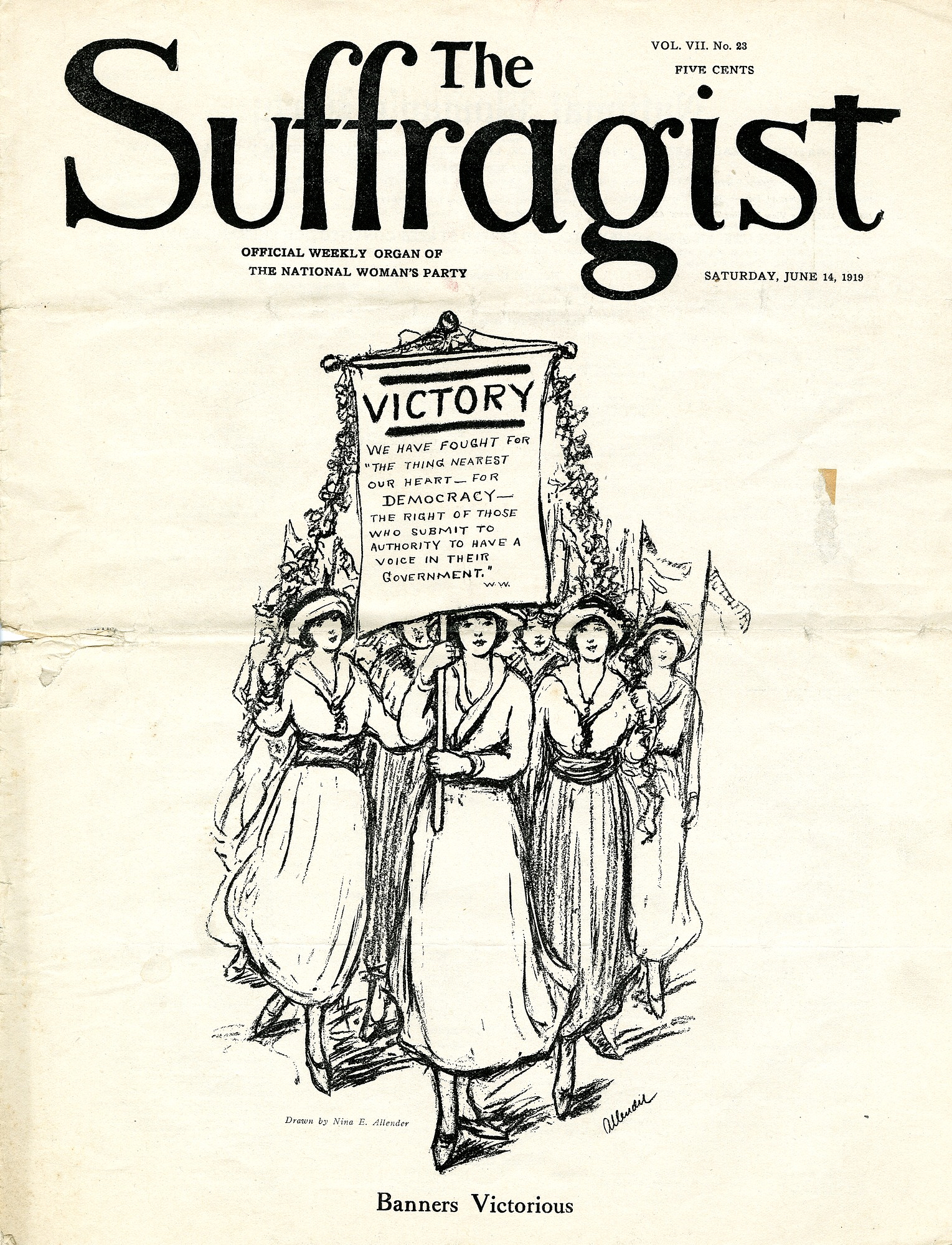
Victory
The Suffragist, June 14, 1919 by Nina Allender, National Women's Party's official cartoonist
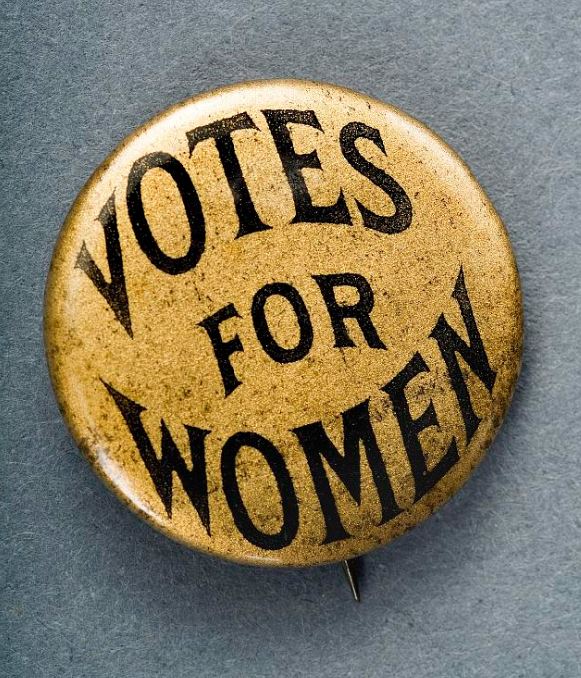
Woman Suffrage Button
Button worn by supporters of woman suffrage. “Votes for Women” was one of the most popular and recognizable slogans used by members of the woman’s suffrage movement.
National Museum of American History
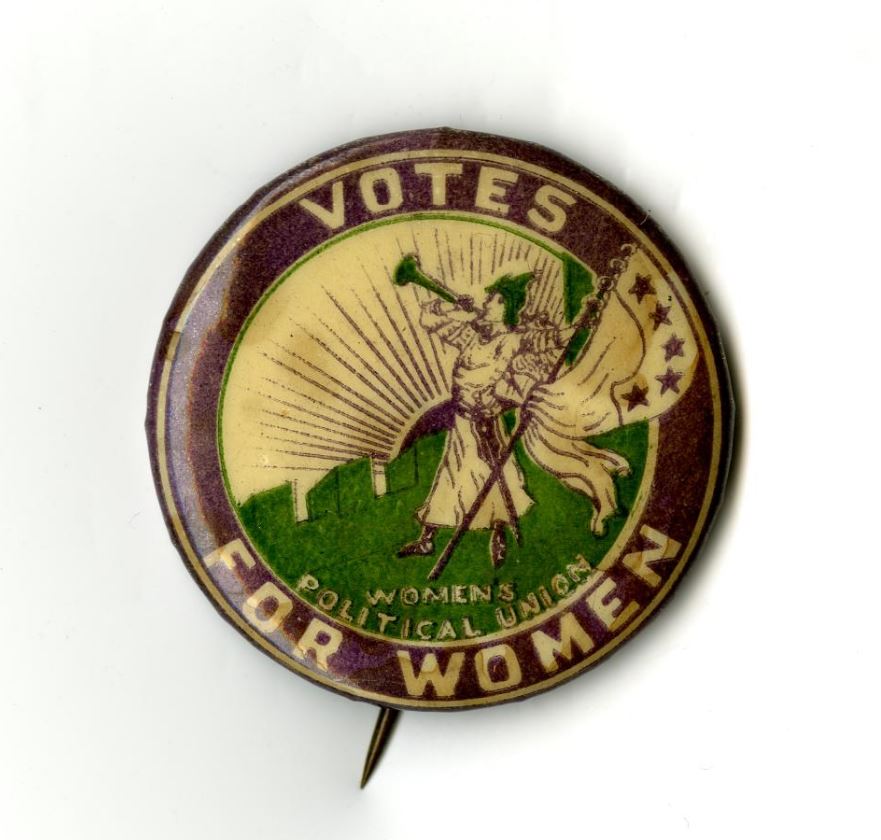
Woman Suffrage Button
Button worn by supporters of woman suffrage.
This button displays two symbols of the suffrage movement: the colors purple, white and green and the popular slogan “Votes for Women."
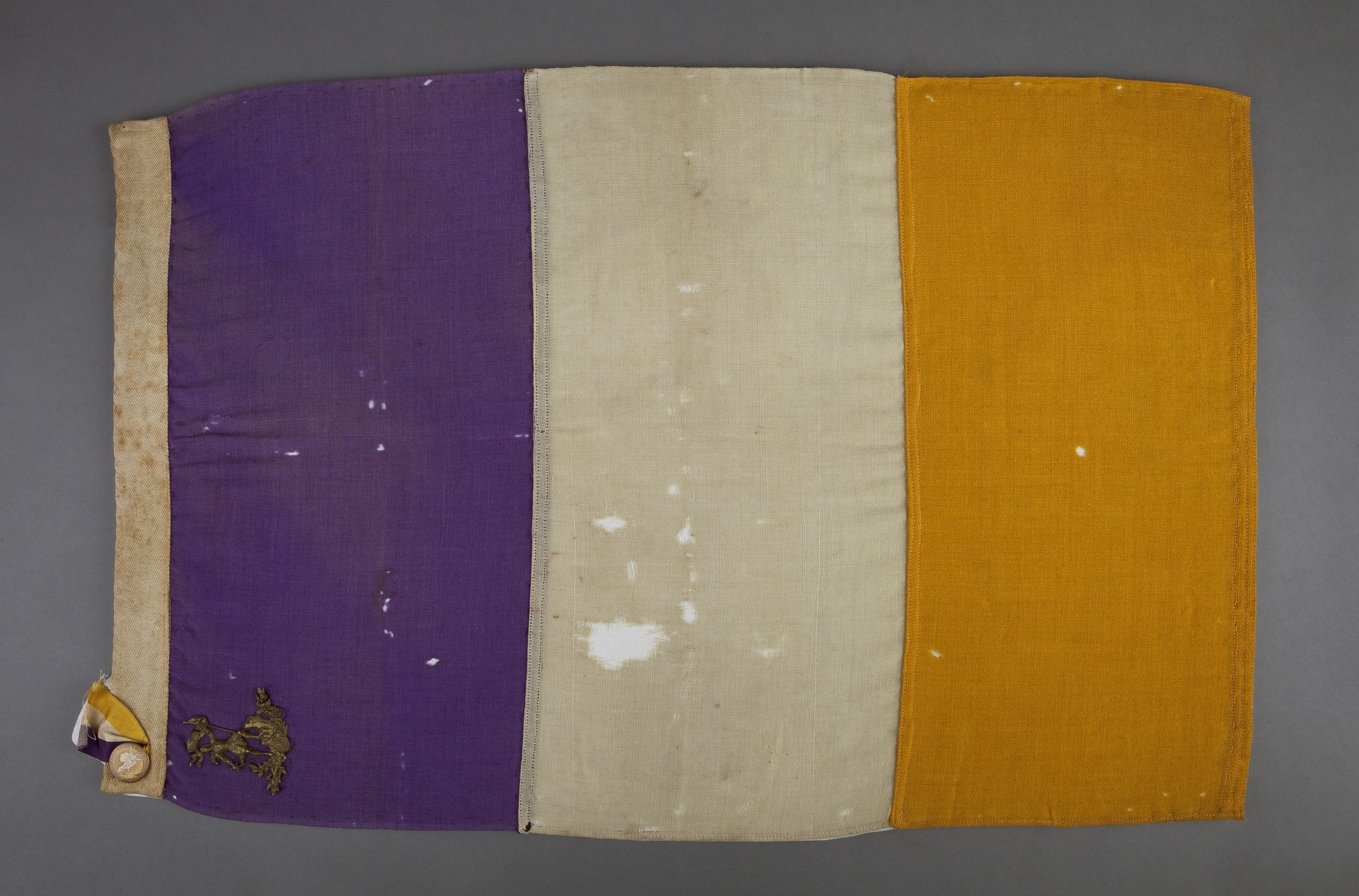
National Woman’s Suffrage Congressional Union Flag
his is the flag of the National Woman’s Suffrage Congressional Union.
In 1914 Alice Paul split from the more conservative National American Woman Suffrage Association, eventually founding the National Woman’s Party. It replaced British suffragettes’ green with yellow as the new American suffrage color.
Alice Paul and Lucy Burns felt that more should be being done to lobby Congress directly and that American suffragists could adapt the tactics of spectacle and political pressure employed by the British "suffragettes." Their new National Woman’s Party (NWP) used parades, petitions, protests, and eventually pickets in an ambitious campaign for a woman suffrage amendment.
National Museum of American History





![[Hedwig Reicher as Columbia] in Suffrage Parade](https://images.squarespace-cdn.com/content/v1/5602e55fe4b053956b5cbfb1/1484860545158-YD0KP5XXTZ10RD94VMA3/%5BHedwig+Reicher+as+Columbia%5D+in+Suffrage+Parade_LOC_11361v.jpg)






